
INTRODUCTION :
A form of resistance welding, the spot welding process is one of the oldest welding methods whereby two or more metal sheets are welded together without the use of any kind of filler material.
This welding process involves applying pressure and heat to the welding area using alloy copper material electrodes which convey an electrical current through the weld workpieces. The workpiece material melts, fusing the parts at which point the current is turned off, pressure from the copper electrodes is maintained and the molten “nugget” solidifies to form the welding joint.
The welding heat is generated by the transfer of electric current, which is transferred to the workpiece through copper alloy electrodes. Copper material is used for the electrodes as it has high thermal conductivity and low electrical resistance compared to most other materials, ensuring that the heat is generated preferentially in the workpieces rather than the copper electrodes.
In spot welding, Due to its lower thermal conductivity and higher electrical resistance properties, steel material is comparatively easy to spot weld, with low carbon steel being most suited to the spot welding process. However, high carbon content steels are prone to poor fracture toughness in the welds as they tend to form hard and brittle microstructures.
The spot welding process has applications in several industries, including automotive, aerospace, railway, metal furniture, medical building, and construction process.
To join the workpieces using the spot welding process they must be precisely aligned, as a correction after welding is not easy. In spot welding, suitable copper alloy electrodes are chosen for welding the workpieces, which can withstand high temperatures and pressures. If the copper alloy electrodes have been positioned correctly, the current is switched on, which flows from one electrode to the other with a very high current. The welding material is heated so much that it liquefies and so both workpieces join. In this process the time during which the electrical current must flow through the workpieces varies, depending on the material of the
A form of resistance welding, the spot welding process is one of the oldest welding methods whereby two or more metal sheets are welded together without the use of any kind of filler material.
This welding process involves applying pressure and heat to the welding area using alloy copper material electrodes which convey an electrical current through the weld workpieces. The workpiece material melts, fusing the parts at which point the current is turned off, pressure from the copper electrodes is maintained and the molten “nugget” solidifies to form the welding joint.
The welding heat is generated by the transfer of electric current, which is transferred to the workpiece through copper alloy electrodes. Copper material is used for the electrodes as it has high thermal conductivity and low electrical resistance compared to most other materials, ensuring that the heat is generated preferentially in the workpieces rather than the copper electrodes.
In spot welding, Due to its lower thermal conductivity and higher electrical resistance properties, steel material is comparatively easy to spot weld, with low carbon steel being most suited to the spot welding process. However, high carbon content steels are prone to poor fracture toughness in the welds as they tend to form hard and brittle microstructures.
The spot welding process has applications in several industries, including automotive, aerospace, railway, metal furniture, medical building, and construction process.
To join the workpieces using the spot welding process they must be precisely aligned, as a correction after welding is not easy. In spot welding, suitable copper alloy electrodes are chosen for welding the workpieces, which can withstand high temperatures and pressures. If the copper alloy electrodes have been positioned correctly, the current is switched on, which flows from one electrode to the other with a very high current. The welding material is heated so much that it liquefies and so both workpieces join. In this process the time during which the electrical current must flow through the workpieces varies, depending on the material of the workpiece and its thickness. If the parts are tightly joined, the copper electrodes are removed to repeat the same process at the next welding point.
workpiece and its thickness. If the parts are tightly joined, the copper electrodes are removed to repeat the same process at the next welding point.
Parts Used :



Microwave oven transformer
Plywood piece 21”*4.25” (18mm thickness) for base
4” Cooling fan A.C 230V
50 square mm copper welding cable (1.5-meter length)
On-Off switch
Indicator panel light
Angle grinder switch bosch 6-100 model
Spring
2 Nos. 5/16 Copper bolts (42mm length)
4 Nos. 5/16 copper nuts
2 Nos. copper lugs
Metal sheet
3 Nos. Plywood pieces 4”*4” (18mm thickness)
Wooden piece
Electric wire 3 core (1 square mm)
3 Nos. high extension 6mm half threaded bolt (120mm length)
Metal handle
Clamps
Screws
Nails
6 Nos. PVC buffers
How to make :
The first step is to remove the secondary coil from the microwave oven transformer. I purchase this transformer from a repair shop and it is a second-hand product.



Then, pass the copper welding cable from this transformer, as shown in the image. I have used 50 square mm and 1.5-meter long heavy copper welding cable.


Attach copper lugs at both the end of the welding cable.
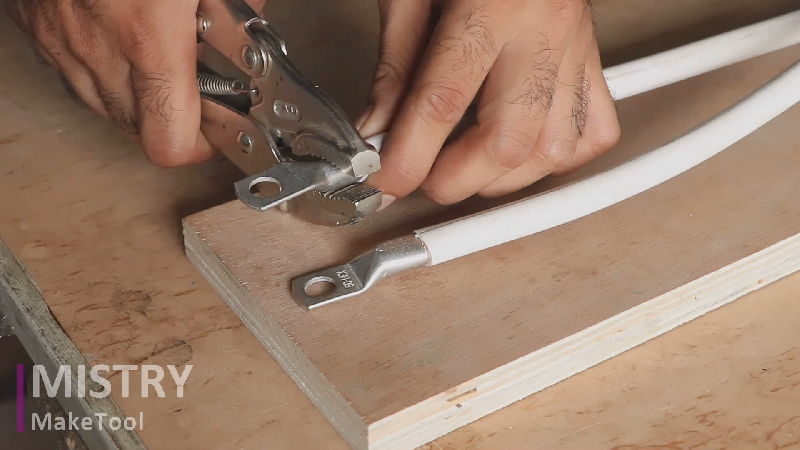

The next step is to attach a cooling fan to the plywood base with the help of an aluminum L-section channel and screws.


Attach 4”*4” plywood piece on the base and attach the microwave oven transformer to this plywood by using screws, as shown in the image.
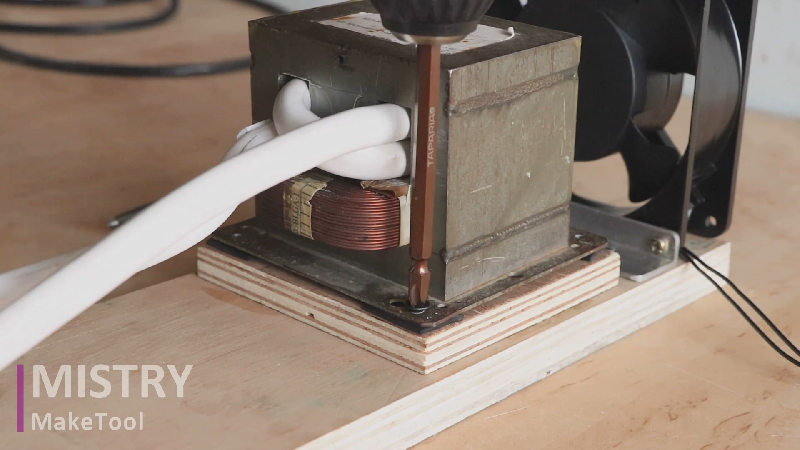

Attach plywood piece on the base and also attach welding cable on it by using clamps, as shown in the image.


Cut the plywood pieces. Drill 6mm holes. Attach wooden piece (handle) between the two plywood pieces by using a 6mm half threaded 120mm long bolt, as shown in the image.


Attach this plywood set on the base by using screws.


Make a slot on the wooden piece by using a circular saw track to attach the angle grinder bosch GWS 6-100 model switch on this slot.
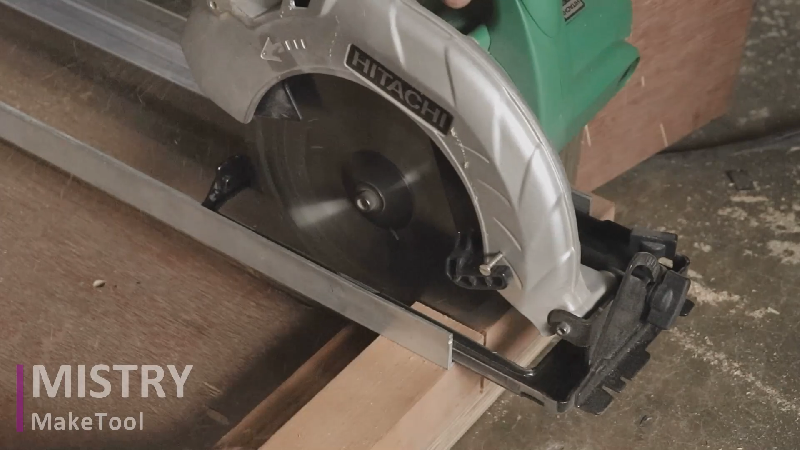

Attach 5/16 Copper bolts (42mm length) with 4 Nos. 5/16 copper nuts in both copper lugs, as shown in the image.
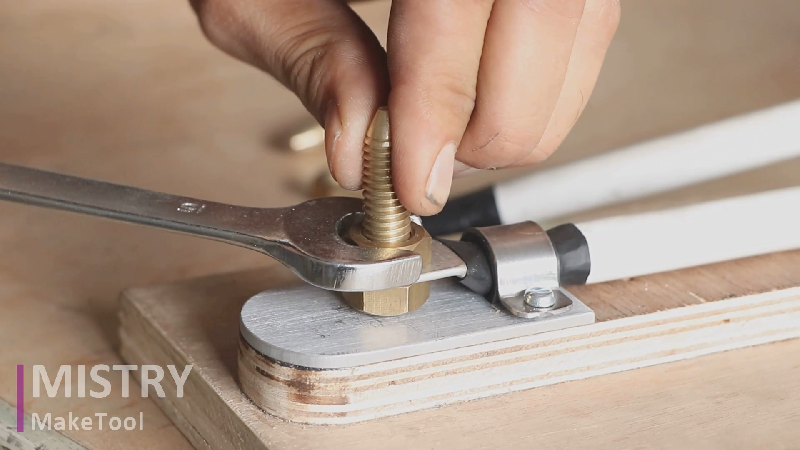

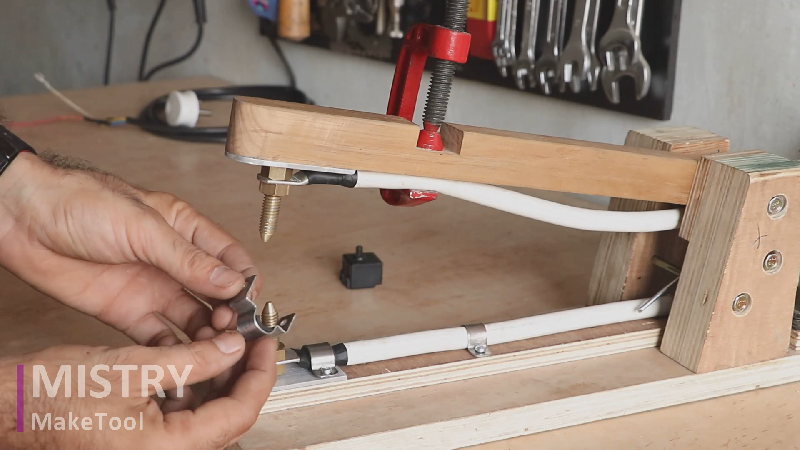

Attach spring through 6mm half threaded 120mm long bolt.


The last step is to make the cover for this spot welding machine. I have used a metal sheet to make the cover. Cut the perfect size of the sheet metal and bend it by using a sheet metal bending machine, as shown in the image.


Drill proper holes to exhaust the air from this. Make a slot for On-Off switch.
Drill a hole for the indicator light.


Attach metal handle on the cover by using Allen key bolts.


Attach On-Off switch and indicator light.


The circuit diagram of the spot welding machine, as shown in the image.
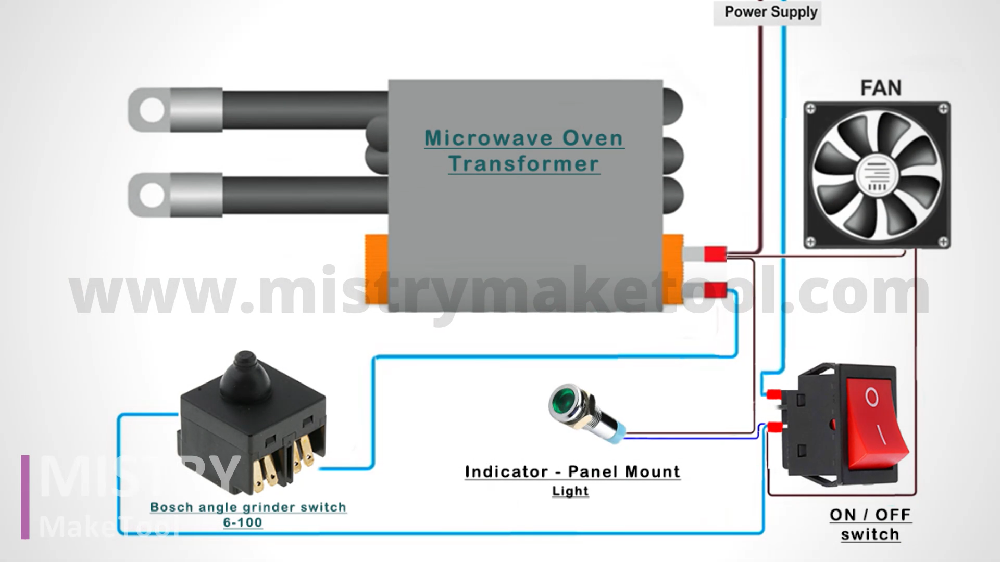

Attach this sheet metal cover to the welding machine.


Attach 6 Nos. PVC buffers below the base of this spot welding.
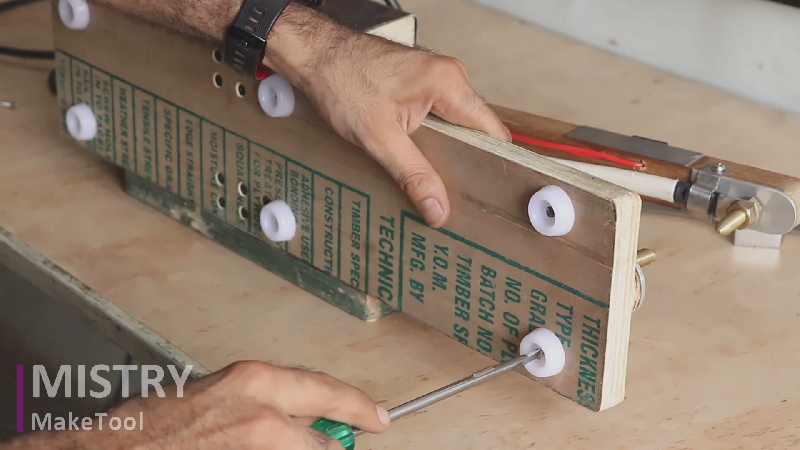

I have painted this spot welding machine. Now, this spot welding machine is ready to use.



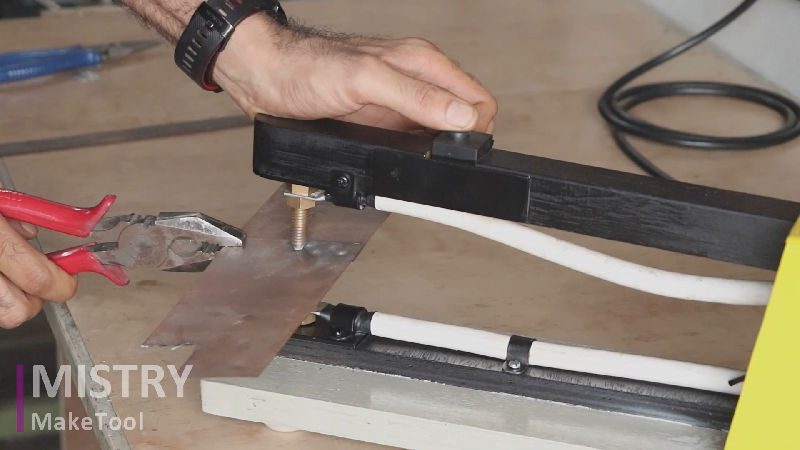

The spot welding process is mainly done with alternating current. Direct current is also possible for this process, but it is rarely used.
For the spot welding process, so-called spot welding pliers are used. These are mainly used on mobile resistance welding equipment. Manual spot welding is used today in car body repair shops or handicraft businesses.
